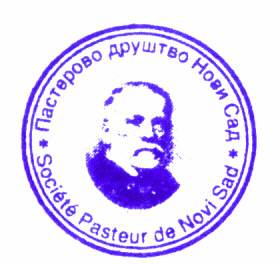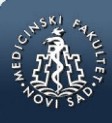md-medicaldata
Main menu:
- Naslovna/Home
- Arhiva/Archive
- Godina 2024, Broj 1
- Godina 2023, Broj 3
- Godina 2023, Broj 1-2
- Godina 2022, Broj 3
- Godina 2022, Broj 1-2
- Godina 2021, Broj 3-4
- Godina 2021, Broj 2
- Godina 2021, Broj 1
- Godina 2020, Broj 4
- Godina 2020, Broj 3
- Godina 2020, Broj 2
- Godina 2020, Broj 1
- Godina 2019, Broj 3
- Godina 2019, Broj 2
- Godina 2019, Broj 1
- Godina 2018, Broj 4
- Godina 2018, Broj 3
- Godina 2018, Broj 2
- Godina 2018, Broj 1
- Godina 2017, Broj 4
- Godina 2017, Broj 3
- Godina 2017, Broj 2
- Godina 2017, Broj 1
- Godina 2016, Broj 4
- Godina 2016, Broj 3
- Godina 2016, Broj 2
- Godina 2016, Broj 1
- Godina 2015, Broj 4
- Godina 2015, Broj 3
- Godina 2015, Broj 2
- Godina 2015, Broj 1
- Godina 2014, Broj 4
- Godina 2014, Broj 3
- Godina 2014, Broj 2
- Godina 2014, Broj 1
- Godina 2013, Broj 4
- Godina 2013, Broj 3
- Godina 2013, Broj 2
- Godina 2013, Broj 1
- Godina 2012, Broj 4
- Godina 2012, Broj 3
- Godina 2012, Broj 2
- Godina 2012, Broj 1
- Godina 2011, Broj 4
- Godina 2011, Broj 3
- Godina 2011, Broj 2
- Godina 2011, Broj 1
- Godina 2010, Broj 4
- Godina 2010, Broj 3
- Godina 2010, Broj 2
- Godina 2010, Broj 1
- Godina 2009, Broj 4
- Godina 2009, Broj 3
- Godina 2009, Broj 2
- Godina 2009, Broj 1
- Supplement
- Galerija/Gallery
- Dešavanja/Events
- Uputstva/Instructions
- Redakcija/Redaction
- Izdavač/Publisher
- Pretplata /Subscriptions
- Saradnja/Cooperation
- Vesti/News
- Kontakt/Contact
 Pasterovo društvo
Pasterovo društvo
- Disclosure of Potential Conflicts of Interest
- WorldMedical Association Declaration of Helsinki Ethical Principles for Medical Research Involving Human Subjects
- Committee on publication Ethics
CIP - Каталогизација у публикацији
Народна библиотека Србије, Београд
61
MD : Medical Data : medicinska revija = medical review / glavni i odgovorni urednik Dušan Lalošević. - Vol. 1, no. 1 (2009)- . - Zemun : Udruženje za kulturu povezivanja Most Art Jugoslavija ; Novi Sad : Pasterovo društvo, 2009- (Beograd : Scripta Internacional). - 30 cm
Dostupno i na: http://www.md-medicaldata.com. - Tri puta godišnje.
ISSN 1821-1585 = MD. Medical Data
COBISS.SR-ID 158558988
KOMPARATIVNA TOKSIKOGENOMIČKA BAZA PODATAKA: UTICAJ HEMIKALIJA IZ ŽIVOTNE SREDINE NA GENE I RAZVOJ BOLESTI
/
THE COMPARATIVE TOXICOGENOMICS DATABASE: THE INFLUENCE OF ENVIRONMENTAL CHEMICALS ON GENES AND DISEASE DEVELOPMENT
Authors
Katarina Živančević1, Katarina Baralić1, Dragica Jorgovanović1, Danijela Đukić-Ćosić1
1Katedra za toksikologiju “Akademik Danilo Soldatović”, Univerzitet u Beogradu – Farmaceutski fakultet, Vojvode Stepe 450, 11221 Beograd
UDK: 613.25:616-089.5
The paper was received / Rad primljen: 05.12.2019. /
Accepted / Rad prihvaćen: 9.12.2019.
Correspondence to:
Dr sc. Danijela Đukić-Ćosić, vanredni professor
Katedra za toksikologiju “Akademik Danilo Soldatović”
Univerzitet u Beogradu – Farmaceutski fakultet
Vojvode Stepe 450, 11221 Beograd
Telefon: 0113951248
e-mail: danijela.djukic.cosic@pharmacy.bg.ac.rs
Sažetak
U današnje vreme se sve veći značaj pridaje uticaju hemikalija iz životne sredine na razvoj bolesti i njihovom štetnom efektu po zdravlje ljudi. Posebno se razmatra kako hemikalije iz životne sredine mogu uticati na razvoj nastanka bolesti posredstvom interakcija sa genima. Boljem razumevanju relacije hemikalija-gen-bolest doprinosi komparativna toksikogenomička baza podataka (engl. Comparative Toxicogenomics Database, CTD baza). CTD baza je jedinstveni izvor podataka, javno dostupan na internet stranici http://CTD.mdibl.org. koji povezuje hemikalije, njihove interakcije sa genima sa uticajem fenotipa na razvoj bolesti i omogućava konstruisanje mreže puteva neželjenih ishoda. Baza pruža detaljniju analizu mehanizama toksičnosti, identifikaciju biomarkera i mogućnost ispitivanja uticaja dve ili više hemikalija što predstvalja ogroman značaj u ispitivanju toksičnosti smeša i polaznu osnovu za dalja ispitivanja. Cilj ovog rada je predstavljanje CTD baze podataka sa osvrtom na njenu praktičnu primenu kao i pregled informacija koje baza pruža upotrebom dostupnih alata.
Ključne reči:
toksikogenomika, CTD baza podataka, hemikalije, geni, bolesti
Abstract
Nowaday, the importance of environmental chemicals on the development of diseases and their detrimental effect on human health is becoming increasingly important. Particular consideration is given to the influence of the environmental chemicals on disease development through interactions with genes. The Comparative Toxicogenomics Database (CTD database) contributes to a better understanding of the chemical-gene-disease relationship. The CTD database is a unique data source, publicly available at http://CTD.mdibl.org which links chemical substances, their interactions with genes with the influence of phenotype on disease development, and enables the construction of adverse outcome pathways networks. The database provides a detailed analysis of the toxicity mechanisms, the identification of biomarkers and the ability to test the effects of two or more chemical substances, which is of great importance in testing the toxicity of mixtures and is the starting point for further testing. The aim of this paper is to present the CTD database with an overview of its practical application as well as to review the information provided by the database using available tools.
Key words:
toxicogenomics, CTD database, chemicals, genes, diseases
References:
- Olden K, Wilson S. Environmental health and genomics: Visions and implications. Nature Review Genetics. 2000;1(2):149–153.
- Calafat AM, Ye X, Silva MJ, Kuklenyik Z, Needham LL. Human exposure assessment to environmental chemicals using biomonitoring. International Journal of Andrology. 2006;29:166–171.
- Dixon K, Kopras E. Genetic alterations and DNA repair in human carcinogenesis. Seminars in Cancer Biology. 2004;14:441–448.
- Dolinoy DC, Jirtle RL, Carolina N. Review Article Environmental Epigenomics in Human Health and Disease. Environmental and Molecular Mutagenesis. 2008;49:4–8.
- Delaney JC, Essigmann JM. Biological Properties of Single Chemical - DNA Adducts : A Twenty Year Perspective. Chemical Research in Toxicology. 2008; 21:232–52.
- McKusick VA.Genomics: Structural and Functional Studies of Genomes. Genomics. 1997;45:244–249.
- Gentleman RC, Carey VJ, Bates DM, Bolstad B, Dettling M, Dudoit S, et al. Bioconductor : open software development for computational biology and bioinformatics. Genome Biology. 2004;5(10):R80.
- Raies AB, Bajic VB. In silico toxicology : computational methods for the prediction of chemical toxicity. WIREs Computational Molecular Science. 2016;6:147–72.
- Javorac D, Baralić K, Bulat Z, Đukić-Ćosić, Danijela Antonijević B. In silico metodologija u toksikologiji: softveri za predviđanje toksičnosti. Arhiv za farmaciju. 2019;69(1):28–38.
- Mattes WB, Pettit SD, Sansone S, Bushel PR, Waters MD. Mini-Monograph | Database Development in Toxicogenomics: Issues and Efforts. Genomics and Risk Assessment 2004;4:495–505.
- Mattingly CJ. Chemical databases for environmental health and clinical research. Toxicology Letters. 2009;186:62–65.
- Waters MD, Fostel JM. Toxicogenomics and systems toxicology : aims and prospects. Nature Reviews Genetics. 2004;5:936–48.
- Davis AP, Grondin CJ, Johnson RJ, Sciaky D, Mcmorran R, Wiegers J, et al. The Comparative Toxicogenomics Database: update 2019. Nucleic Acids Research. 2019;1–7.
- Davis AP, Murphy CG, Saraceni-richards CA, Rosenstein MC, Wiegers TC, Mattingly CJ. Comparative Toxicogenomics Database: a knowledgebase and discovery tool for chemical – gene – disease networks. Nucleic Acids Research. 2009;37:786–92.
- Davis AP, King BL, Mockus S, Murphy CG, Saraceni-Richards C, Rosenstein M, et al. The Comparative Toxicogenomics Database : update 2011. Nucleic Acids Research. 2011;39:1067–72.
- Comparative Toxicogenomics Database. Dostupno na: https://ctdbase.org/; poslednji pristup decembar 2019.
- Comparative Toxicogenomics Database analysis tools: Batch Query. Dostupno na: https://ctdbase.org/tools/; poslednji pristup decembar 2019.
- Comparative Toxicogenomics Database analysis tools: Set Analyzer. Dostupno na: https://ctdbase.org/tools/; poslednji pristup decembar 2019.
- Comparative Toxicogenomics Database analysis tools: MyGeneVen. Dostupno na: https://ctdbase.org/tools/; poslednji pristup decembar 2019.
- 20. Comparative Toxicogenomics Database analysis tools: MyVenn. Dostupno na: https://ctdbase.org/tools/; poslednji pristup decembar 2019.
- Comparative Toxicogenomics Database analysis tools: VennViewer. Dostupno na: https://ctdbase.org/tools/; poslednji pristup decembar 2019.
- Davis AP, Murphy CG, Rosenstein MC, Wiegers TC, Mattingly CJ. The Comparative Toxicogenomics Database facilitates identification and understanding of chemical-gene-disease associations: arsenic as a case study. BMC Medical Genomics. 2008;12:1–12.
- Wiegers TC, Davis AP, Cohen KB, Hirschman L, Mattingly CJ. Text mining and manual curation of chemical-gene-disease networks for the Comparative Toxicogenomics Database (CTD). BMC Bioinformatics. 2009;12:1–12.
- Grondin CJ, Davis AP, Wiegers TC, Wiegers JA, Mattingly CJ. Accessing an Expanded Exposure Science Module at the Comparative Toxicogenomics Database. Environmental Health Perspectives. 2018;1–5.
- Živančević KS, Baralić K, Jovanović D, Jovanović A, Antonijević B, Bulat Z, Ćurčić M, Buha Đorđević A, Javorac A, Matović V, Đukić-Ćosić D. Cadmium and lead mixture and lung cancer development: toxicogenomic data mining approach. Toxicology Letters. 2019;314S1:S237.
- Živančević K, Baralić K, Đukić-Ćosić D. The influence of phthalates (diethylhexyl phthalate (DEHP) and dibutyl phthalate (DBP)) exposure on diabetes mellitus type 2 development – analysis of toxicogenomic data. Publications Office of the European Union, JRC Summer School 2019, Non-animal approaches in science : challenges & future directions, Ispra, Italy, 21-24 May, 2019.
- Baralić K, Živančević K, Ćurčić M, Bulat Z, Buha Đorđević A, Matović V, Jovanović D, Đukić-Ćosić D. Toxicogenomics analysis of phthalates and bisphenol A mixture: Lung cancer. IUTOX 15th International Congress of Toxicology Book of Abstracts, Honolulu, Hawaii, USA, July 15–18, 2019.
- Đukić-Ćosić D, Baralić K, Živančević K, Javorac D, Kotur-Stevuljević J, Antonijević E, Antonijević B, Matović V. Enviromental chemicals and alterations in telomere maintenance as a factor in human diseases: Toxicogenomic data mining. IUTOX 15th International Congress of Toxicology Book of Abstracts, Honolulu, Hawaii, USA, July 15–18, 2019.
- Baralić K, Jorgovanović D, Ćurčić M, Antonijević E, Živančević K, Antonijević B, Đukić-Ćosić D. Toksikogenomički metod ispitivanja veze živa-gen-razvoj bolesti. Arhiv za farmaciju. 2018;68(3):445.
- Baralić K, Živančević K, Antonijević B, Bulat Z, Ćurčić M, Antonijević E, Javorac D, Matović V, Đukić-ĆosićD. Roles of Nrf2 protein in environmental chemicals’ toxicity:Toxicogenomics data mining. Toxicology Letters. 2019:314S1:S80.
- Baralić K, Jorgovanović D, Jennen D, Đukić-Ćosić D.Phthalates (diethylhexyl phthalate (DEHP) and dibutyl phthalate (DBP)) and Obesity: a Toxicogenomics Approach. Book of abstracts of the 10th Congress of Toxicology in Developing Countries (CTDC10) and 12th Congress of the Serbian Society of Toxicology (12th SCT) April 18-21, 2018 Belgrade, Serbia
- Groten JP, Feron VJ, Sühnel J. Toxicology of simple and complex. Trends in Pharmacological Sciences. 2001;22(6):316-22.
- Davis AP, Wiegers TC, Wiegers J, Johnson RJ, Grondin CJ, Mattingly CJ. Chemical-induced phenotypes at CTD help inform the pre-disease state and construct adverse outcome pathways. Toxicological Sciences. 2018;165(1):145-156.
- Deng J-L, Xu Y-h and Wang G (2019) Identification of Potential Crucial Genes and Key Pathways in Breast Cancer Using Bioinformatic Analysis. Frontiers in Genetics. 2019;10:695.
- Zhang Y, Wu W, Qu H. Integrated Analysis of the Gene Expression Changes during Colorectal Cancer Progression by Bioinformatic Methods. Journal of Computational Biology. 2019;26(10):1168–76.
- Igarashi Y, Nakatsu N, Yamashita T, Ono A, Ohno Y, Urushidani T, et al. Open TG-GATEs: A large-scale toxicogenomics database. Nucleic Acids Research. 2015;43(D1):D921–7.
- Stingone JA, Buck Louis GM, Nakayama SF, Vermeulen RCH, Kwok RK, Cui Y, et al. Toward Greater Implementation of the Exposome Research Paradigm within Environmental Epidemiology. Annual Review of Public Health. 2017;38(1):315–27.
- Vinken M, Knapen D, Vergauwen L, Hengstler JG, Angrish M, et al. Adverse outcome pathways : a concise introduction for toxicologists. Archives of Toxicology. 2017;91(11):3697-3707.
- Bolt HM. Adverse outcome pathways. Archives of Toxicology. 2017;91(12):4023–4.
- Leist M, Ghallab A, Graepel R, Marchan R, Hassan R, Bennekou SH, et al. Adverse outcome pathways: opportunities, limitations and open questions. Archives of Toxicology. 2017;91(11):3477–505.
PDF Živančević K. et al • MD-Medical Data 2019;11(3-4): 159-164
 Medicinski fakultet
Medicinski fakultet